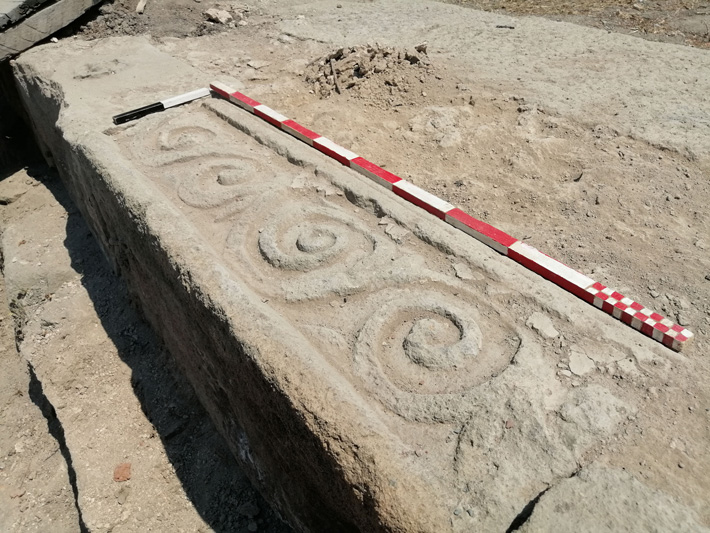Roman-Era Coins Unearthed at Spa Complex in Bulgaria
More than 40 ancient coins, most of which from the 4th century CE, have been discovered since the excavations were started in the summer of 2020 on the site Aquae Calidae near Bourgas on the southern Bulgarian Black Sea coast.
This was announced by the head of the archaeological dig, Associate Professor Dimcho Momchilov. During the current archaeological season, excavations are being carried out in the north-eastern sector of the complex.
“The idea is, if possible, to complete the northeastern apoditerium (vestibule) of the ancient, early Byzantine and medieval bath this year,” Momchilov said.
This will be followed by partial conservation and restoration. Among the interesting new finds from the current archaeological season is a monumental step that bore a roof structure.
Momchilov said that remnants of construction from the Roman period, and the Roman period, had been found. Apart from the coins, other items from the fourth century CE had been found.

“Our desire is to explore the shaft we found east of the building. It is from an early period and is very interesting. There are partially preserved water pipes and we will try to open it this year.
It had a variety of materials, but only after when I open it, I can say how long it has been for sure. In any case, for me, this shaft is connected with the early Roman bath, and the construction of the whole early Byzantine bath was in accordance with this shaft,” he said.
Excavations at the Aquae Calidae archeological complex are scheduled to continue until the end of July. Aquae Calidae Thermopolis originated around the warm Bourgas mineral springs in Thracian times, in the first millennium BCE.
The Thracians turned the hot spring into a revered sanctuary of the Three Nymphs. The spa complex has an area of six acres. In the north-south direction, its length is 86 meters.
In the late Middle Ages, Aquae Calidae became known as Therma or Thermopolis. By the sixth century, the settlement already had expanded baths and fortress walls.
In the 16th century, Ottoman ruler Sultan Suleiman the Magnificent built a contemporary Turkish bath at the site.





